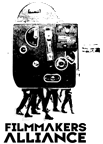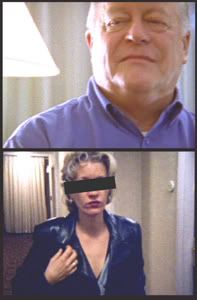I know, I know. This is a terribly pretentious blog title...and a bit misleading. I don't actually hold the magic key to creating cinematic genius. But I do have some insights culled from various places that I find remarkably useful in helping me conceive of things, at the very least, in a fresh light.
First of all, let's clarify my definition of genius work. It is work that is both stunningly original/distinctive, but also deeply relevant to the universal human experience. Clearly, it is the work of someone who sees the world in a way that others do not, but in a way that makes sense to the rest of us on a profound level.
Most people see the thinking process behind math/science and that behind art as polar opposites. Not so, at all. In fact, the kind of thinking that produces genius mathematicians and scientists is precisely the same as that which creates genius artists. Therefore, many of the approaches to creative thinking listed below come from the math/science world - since the way those geniuses approach their work has been more often studied than the way artists approach their work. Nonetheless, they are relevant to filmmakers if you really have the ambition to create cinematic genius - or at least to create stuff we haven't seen a bazillion times before.
1. Understand what has come before, but don't be a slave to it.
All great mathematicians and scientists were well-educated in their fields - or thoroughly self-educated. The same is true of artists. They understand their craft. They are educated in the art of it. But they are not chained to the things that they learn. In fact, they are eager to explore ways to take what has come before and re-purpose it, re-conceive it, re-invent it...or totally deconstruct it. But you have to understand the forms and formulas to effectively make use of them and, ultimately, move past them. Watch a ton of great films. Discuss them with others. Take classes in understanding the aesthetics and language of film. Read film critiques (not bone-headed reviews) - anything that takes you inside the construction of a great film. Then have the vision and ambition to establish your own brand of genius.
2. Look at the "problem" of creating your film in many different ways.
Let's face it. Creativity is problem-solving. You are trying to express something and/or tell a story. The problem facing you is how to best tell it/express it. You may then think, "well, this is not math or science, there is no singular solution, so how can you think of it as problem-solving?" But there is a singular solution. That singular solution is the one that BEST expresses your idea - that best tells the story in a way that only YOU can tell it. Reaching it takes examining the myriad of options in front of you by creating an endless menu of possibilities for yourself from which to choose. Let no idea be too ridiculous or irrelevant to pass through your brain. In fact, dig for unusual solutions. You will soon learn how to restructure the problem in many different ways. This will push you past the limiting prejudices in your thinking. Often, the problem itself is reconstructed and becomes a new one. And eventually, all of this leads to the solution that speaks to your soul - and the collective one of your audience.
3. Make novel combinations. Combine, and recombine, elements into different combinations no matter how incongruent or unusual.
The laws of heredity on which the modern science of genetics is based came from the Austrian monk Grego Mendel, who combined mathematics and biology to create a new science. Mix and match your stories, characters, genres, visual ideas, etc. to form relationships and make connections between dissimilar elements. Da Vinci forced a relationship between the sound of a bell and a stone hitting water. This enabled him to make the connection that sound travels in waves. Samuel Morse invented relay stations for telegraphic signals when observing relay stations for horses. In film, Welles devised his visual strategy for the artufl bio-pic "Citizen Kane" from watching John Ford's classic western "Stagecoach". Genuis ideas are seldom wholly original. They often come from the original combination of pre-existing ideas.
4. Think in opposites.
Physicist Niels Bohr believed, that if you held opposites together, then you suspend your thought, and your mind moves to a new level. When you conceive of a visual idea, character or circumstance, imagine it's opposite. Invariably, you will also, without effort, conceive of every variation in between the two. You will also be able to look at the original idea in a completely new way.
5. Think metaphorically.
The capacity to perceive resemblances between two separate areas of existence and link them together is a special gift. And visual metaphors are a ubiquitous component of cinematic genius. Thinnking/creating metaphorically is also an ability that can be nurtured. Watch movies and read work rich in metaphor - especially short stories and poems. Take a literature class (or read a book) on developing dynamic metaphors. But, most importantly, observe and think. All things in life are metaphors. People can be metaphors. Practice creating connections between people/things - a cop, a bug, a chair, a tree, a car crash, whatever - think of how the person/object or group of people/objects exist in the particular circumstance in which you are observing them. Then, think about how similar that existence is to some other situation, idea, emotion or theme.
6. Visualize!
When Einstein thought through a problem, he always found it necessary to formulate his subject in as many different ways as possible, including using diagrams. He visualized solutions, and believed that words and numbers as such did not play a significant role in his thinking process. Well, this is even more true for filmmakers because this is a visual medium. But it is shocking to me how many filmmakers think in terms of words - the words on a page of a script. Move past the script even as you are writing it. See the film. See the scene. See the visual composition. See the detail within it. Place your various creative options within the context of that visualization and see how they play out. See them and feel them. Then, let your instincts guide you. For those for whom this is difficult, use pre-visualization tools - storyboards, photos, pre-viz software or shoot parts of scenes on video - anything to guide you in this process.
7. Produce! A distinguishing characteristic of genius is productivity.
Where is genius measured? Not in the thoughts in our head, but in the work we actually produce. Thomas Edison held 1,093 patents. How many have proved meaningful to us? Probably just a few. Look at Leonardo Da Vinci's massive body of accomplishments. Van Gogh painted over 800 canvases in his short lifetime (and sold only one). Filmmaking, of course, is very expensive and not something you can do quite as prolifically as painting. But you can explore your ideas on paper and on video. You can keep creating, keep combining, keep testing/experimenting. Only in this way will you bridge the gap between your potential for genius and the true realization of it.
8. Welcome Failure.
I've said it before and I'll say it again, creating stuff that sucks is an important step in creating genius work. In a study of 2,036 scientists throughout history, Dean Keith Simonton of the University of California at Davis found that the most respected scientists produced not only great works, but also many "bad" ones. They weren't afraid to fail, or to produce mediocrity in order to arrive at excellence. Whenever we attempt to do something and fail, we are lead to do something else. This is a critical part of creative growth and exploration and we need to embrace it with gusto. Failure can be incredibly productive, but only if we do not focus on it as an unproductive result. Instead, analyze the process, its components, and how you can arrive at a different result. Do not ask the question "Why have I failed?", but rather "What have I done?"
Subscribe to:
Post Comments (Atom)















This comment has been removed by a blog administrator.
ReplyDelete